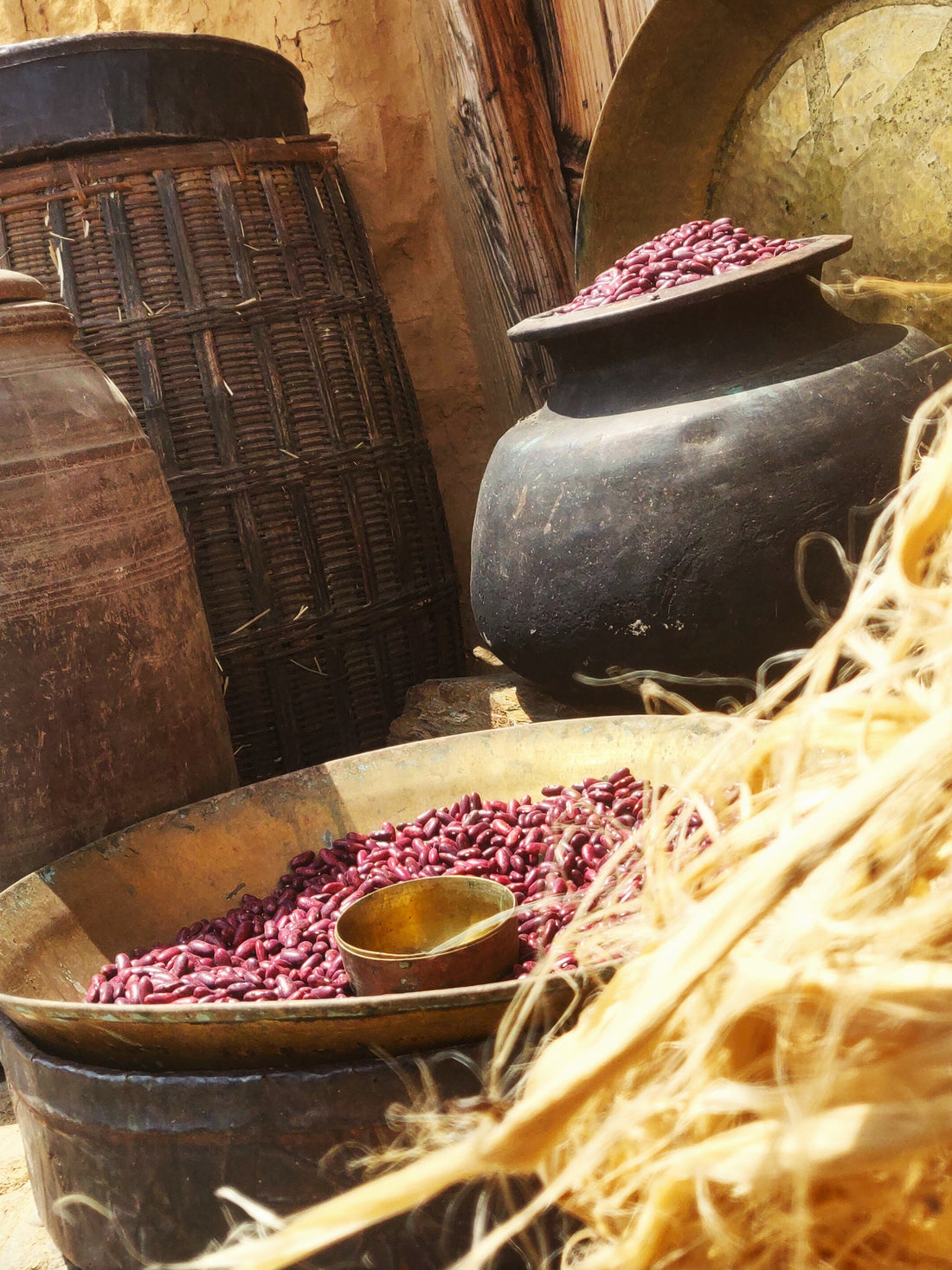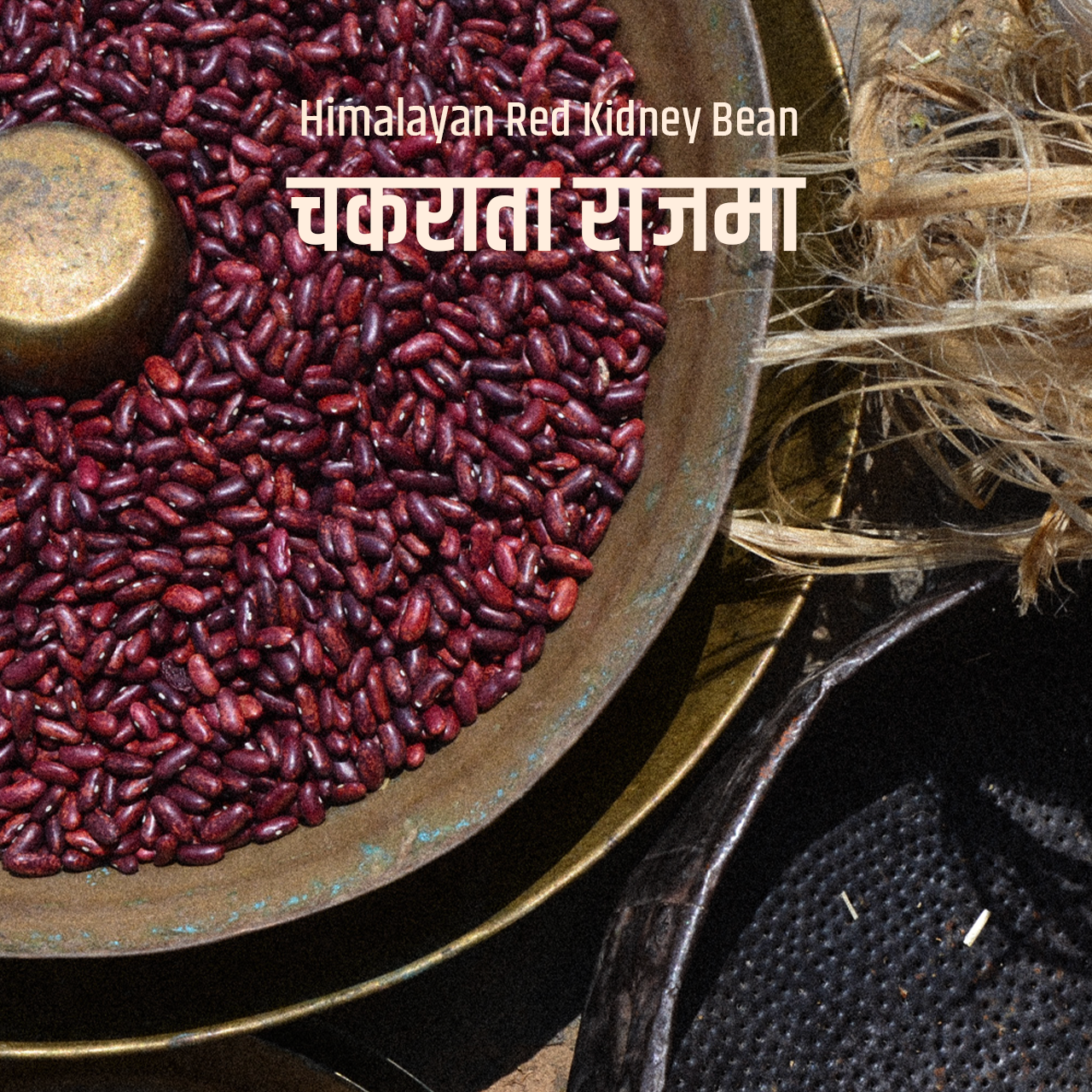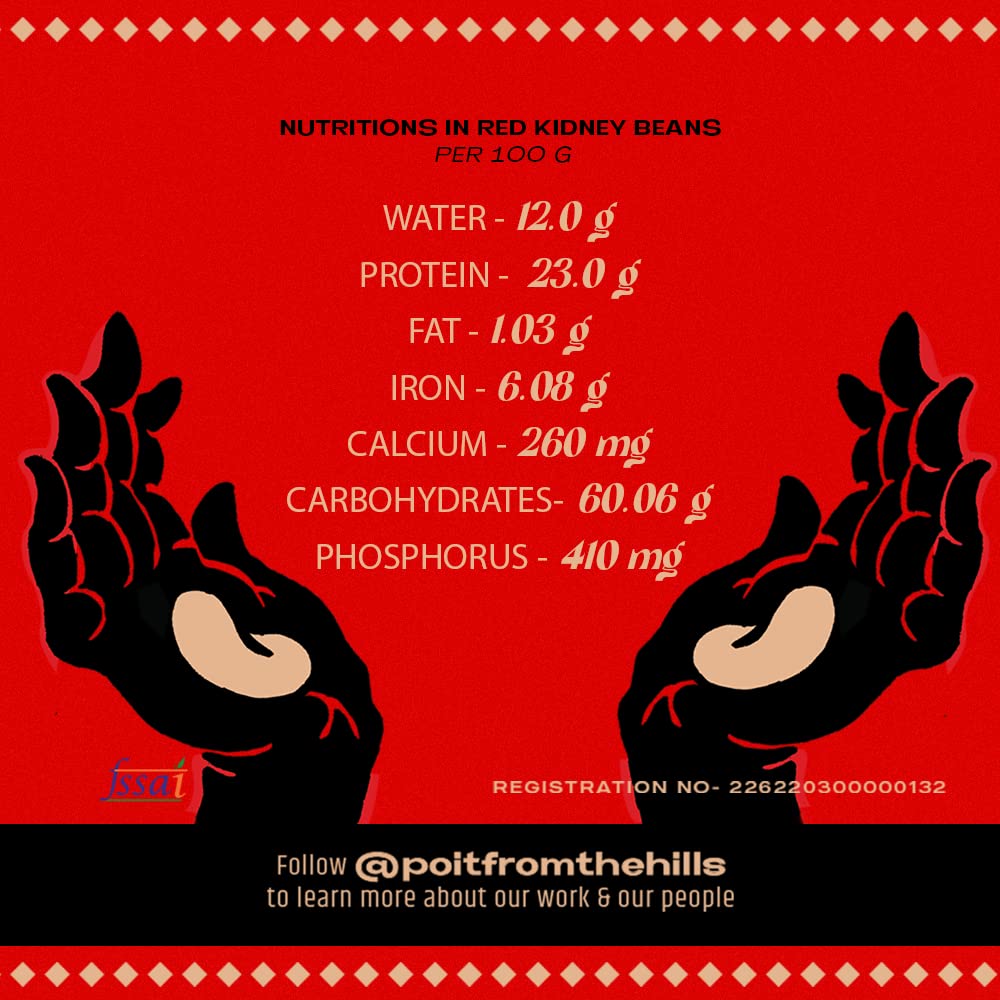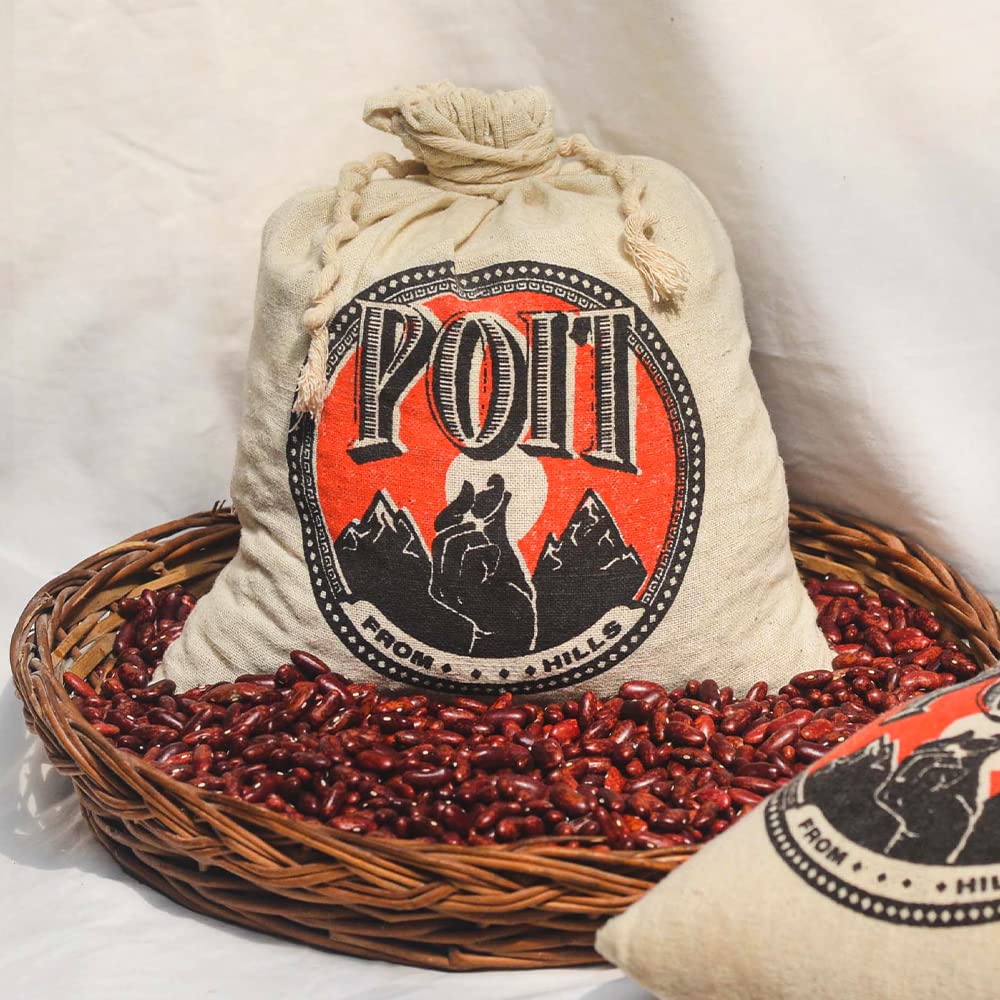
Pahadi Rajma: The Unique Charm of Uttarakhand's Kidney Beans
Poit From HillsShare
 Understanding Pahadi Kidney Beans commonly known as Rajma/Pahadi Rajma
Understanding Pahadi Kidney Beans commonly known as Rajma/Pahadi Rajma
Nutritional profile of Pahadi Kidney beans / Rajma
Health benefits of kidney beans (rajma):
Incorporating kidney beans grown in the Himalayan foothills, such as Pahadi Kidney Beans, into your diet for their exceptional nutritional benefits. While specific studies on the nutritional profile of kidney beans from the Himalayan region may be limited, the nutritional characteristics of kidney beans are generally recognized, making them a recommended inclusion in a healthy diet. Studies have confirmed their richness in plant-based protein, fiber, iron, potassium, magnesium, folate, and vitamins like vitamin K and vitamin B6. Additionally, kidney beans exhibit significant antioxidant activity, which protects cells from oxidative damage. The unique environmental factors of the Himalayan region, such as pristine air, fertile soil, and favorable climatic conditions, contribute positively to the nutritional quality of crops grown there. Therefore, incorporating kidney beans from the Himalayan foothills into your diet can contribute to a well-rounded and nourishing eating plan.
Varieties of Kidney Beans/Rajma in Uttarakhand
Uttarakhand, with its fertile soil and favorable climate, is known for producing high-quality rajma (kidney beans). The region boasts several varieties of kidney beans that are cultivated and celebrated for their unique flavors and culinary attributes. Some of the notable kidney beans found in Uttarakhand include:
Red Kidney Bean/Red Rajma :
Red kidney beans are the most well-known type of kidney bean, distinguished by their large, kidney-shaped appearance and deep red color. They are ideal for making hearty dishes like chili, stews, and bean-based spreads like hummus because of their firm texture and robust flavor. However, when it comes to preparing the quint essential Rajma Chawal recipe, the revered Chakrata Red Beans found in Uttarakhand, particularly in the Chakrata region, are the best choice. Chakrata Red Beans are distinguished by their larger size when compared to other types of red kidney beans. Although they take slightly longer to cook, their distinguishing feature is their ability to retain their shape after being cooked in a pressure cooker. This characteristic is especially notable.
For more information on Chakrata Rajma /best red beans visit : https://www.poitfromhills.com/products/chakrata-rajma
Harsil Kidney Bean/Harsil Rajma :
Harsil Rajma, grown in the charming town of Harsil, is a highly regarded kidney bean variety known for its delicate flavor, creamy texture, and ability to infuse a subtle richness into a wide range of culinary delights. These beans stand out from other kidney bean varieties due to their distinctively creamy texture, which gives dishes a hint of decadence.With its creamy texture, Harsil Rajma adds a delightful twist to the well-known Rajma Chawal. It elevates the conventional Rajma dish to new levels of decadence by giving it a velvety smoothness. The beans and fragrant spices combine with ease to create a flavorful symphony.
Harsil Rajma opens up a world of possibilities for those interested in culinary exploration. Its creamy consistency makes it an excellent choice for making delectable kebabs or patties. Harsil Rajma can be transformed into flavorful kababs that melt in your mouth, adding a touch of sophistication to your culinary repertoire whether you prefer vegetarian or non-vegetarian options.
For more information on Harsil rajma /best harsil kidney beans visit
https://www.poitfromhills.com/products/harsil-rajma
Spotted Kidney Bean/Chitra Rajma :
Chitra Rajma, also known as speckled kidney beans, is a highly valued variety grown in Jaunsar Bawar. Its distinctive speckled appearance adds a visually appealing element to dishes, while its flavor profile offers a delectable blend of earthiness and nuttiness. Chitra Rajma, the tastiest of kidney beans, has earned the title of "queen of beans" for its exceptional taste and culinary allure.
Chitra Rajma, a member of the "mountain kidney bean" family, benefits from the pristine environment, clean air, and fertile soil found in Uttarakhand's mountainous regions, including Jaunsar Bawar. These natural elements contribute to its exceptional flavor and nutritional value, making it a popular ingredient in regional cuisine.Chitra Rajma's adaptability allows it to be used in a variety of contexts.
For more information on Chakrata Chitra Rajma /best Chitra kidney beans visit:
Carmine Beans/Chemmi or Baliya :
Carmine Beans, also known as Chemmi or Baliya, are a type of kidney bean that grows in Uttarakhand's Jaunsar region. These small yet robust beans carry a powerful nutritional punch, making them an excellent supplement to a healthy diet.
Carmine Beans/chemmi have a high nutritional value due to their excellent nutrient profile. They are high in plant-based protein, dietary fiber, and important minerals including iron and potassium. These beans also include a variety of vitamins, including B vitamins like folate and antioxidants, which help with overall health and well-being.Carmine Beans are distinguished by their peculiar flavor profile. They have a delicious nutty undertone that sets them apart from other kidney bean kinds. When it comes to recipe ideas, Carmine Beans go particularly well with Urad Dal, also known as black gram. Dal Makhani, also known as "Ma ki Dal," is a popular dish that perfectly showcases the harmonious combination of Carmine Beans and Urad Dal. This traditional Punjabi dish is a creamy lentil preparation with these beans for texture and flavor.
Carmine Beans have a plethora of nutritional advantages. Their high protein content promotes satiety, helps muscle growth and repair, and keeps blood sugar levels stable. The fiber content promotes gut health and aids digestion. Furthermore, the high mineral and vitamin content promotes overall vitality and immune function.
https://www.poitfromhills.com/products/baaliyan-rajma
How to Cook Pahadi Rajma /Kidney Beans
When it comes to cooking Pahadi Rajma, it's important to note that the cooking time differs significantly from that of commercially grown kidney beans or those from the plains. The cooking method and soaking period remain the same, but the cooking time and texture of the cooked beans are noticeably different, adding to the allure of Pahadi Rajma.
How to soak kidney beans:
-
Sort and Rinse: Remove any debris from the kidney beans and rinse them under water.
-
Overnight Soak: Place the kidney beans in a bowl, cover with water, and soak overnight or for at least 8 hours.
-
Quick Soak: Alternatively, boil the kidney beans for 2 minutes, then let them soak for 1 hour.
-
Drain and Rinse: After soaking, drain and rinse the kidney beans before cooking.
Now you can proceed with cooking the kidney beans using your preferred method
Cooking recipe of pahadi rajma and pahadi red rice https://www.poitfromhills.com/blogs/news/kidney-beans-and-rice-delight
Benefits of Kidney beans/Rajma :
Kidney beans are high in protein, fiber, complex carbohydrates, and essential minerals such as iron, potassium, and magnesium. Vitamins like vitamin K and vitamin B6 are also present.
Heart Health: Kidney beans' high fiber content, which lowers cholesterol levels, supports heart health. They are a heart-healthy meal option since they are low in fat and salt.
Blood Sugar Control: Kidney beans are advantageous for those with diabetes or those at risk of getting the disease because of their high fiber content, which helps to regulate blood sugar levels.
Kidney beans are a satisfying and low-calorie meal due to their fiber and protein levels. By lowering total calorie consumption, they can support weight control by promoting satiety.
Kidney beans are highly adaptable in the kitchen and may be used in a variety of meals, including chili, soups, salads, and bean-based spreads. They enrich dishes with texture, flavor, and nutrients.
These kidney beans from Jaunsar Region of Uttarakhand not only hold cultural significance but also reflect the region's commitment to sustainable agriculture and preserving traditional farming practices. Their flavorsome profiles, varied textures, and versatility in culinary applications make them a prized ingredient in local Uttarakhandi dishes and a delight for food enthusiasts seeking an authentic taste experience.
Click on the link for more recipe https://www.poitfromhills.com/blogs/news









